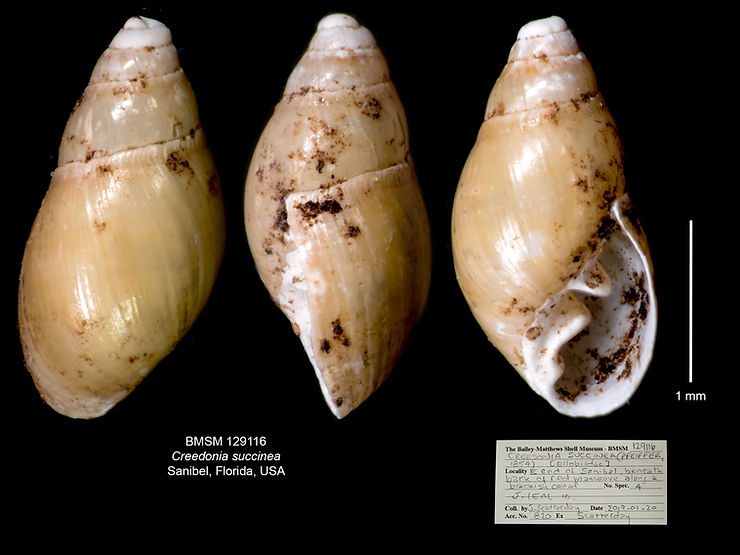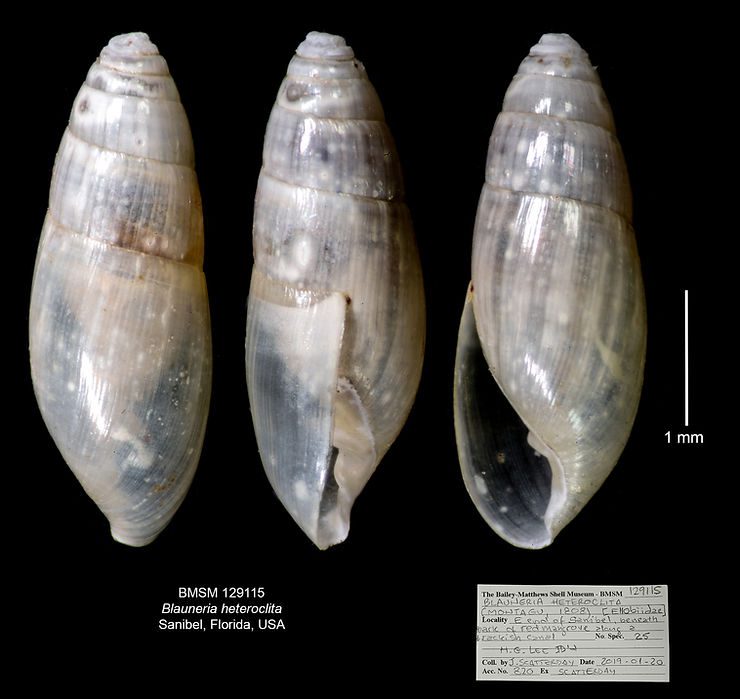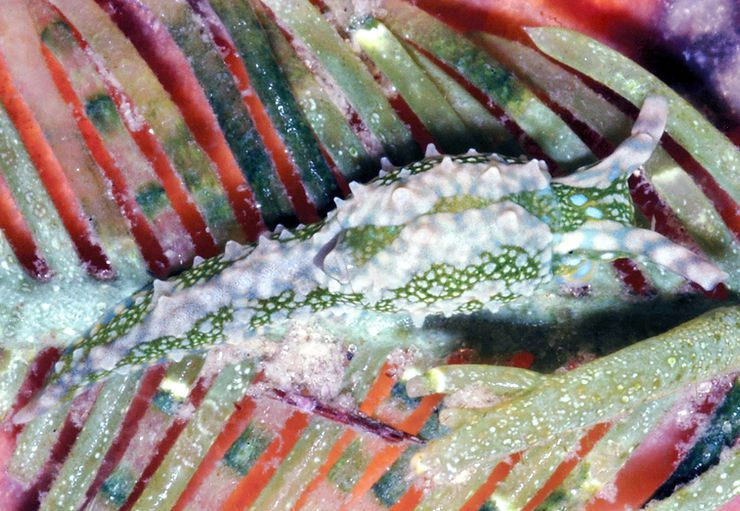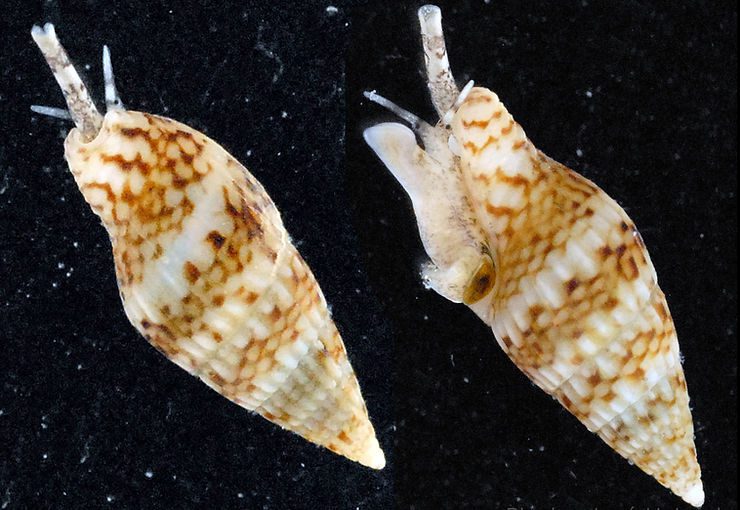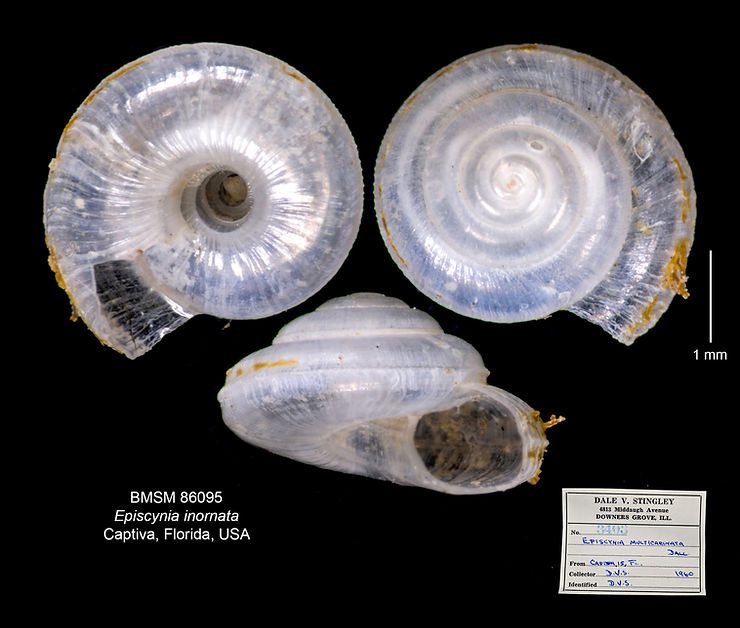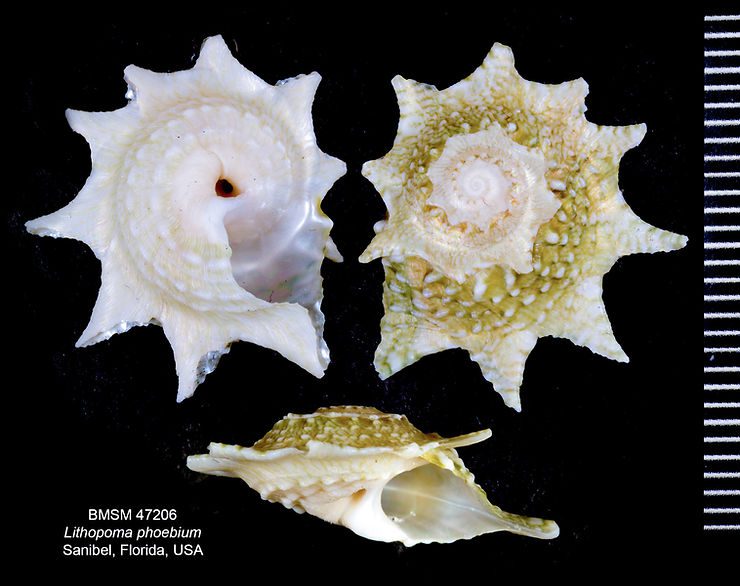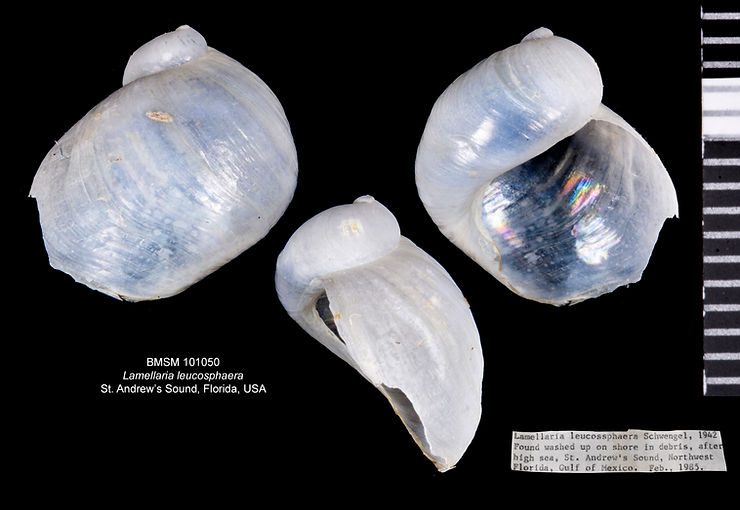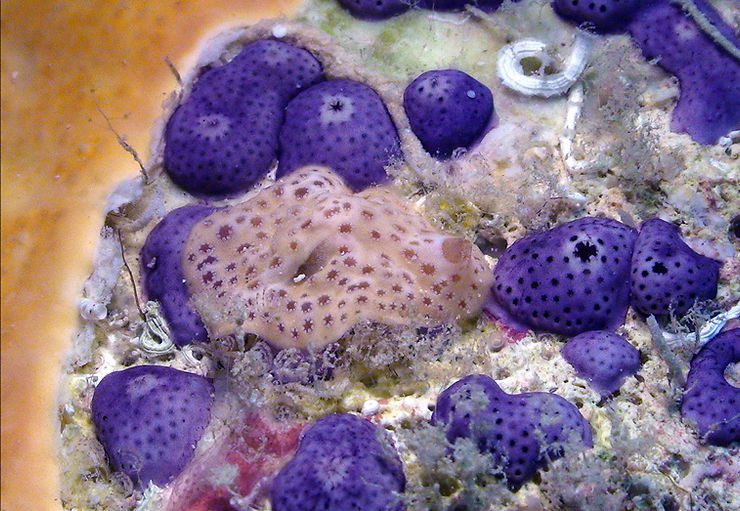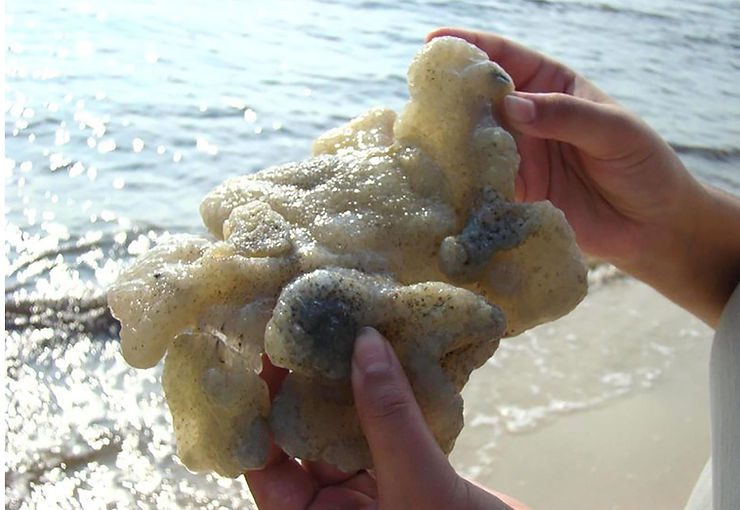
The Secret Life of “Sea Pork”
A common find on the beaches of Sanibel and Captiva, particularly after winter storms, ascidians, also known as “sea squirts” or “sea pork,” are among the most common subjects of inquiries about sea life by island visitors and Museum guests. Recently, I had a chance to pitch in with some information about the subject for the cool online blog Atlas Obscura. Read Jessica Leigh Hester’s article about “sea pork” here. (Photo of Aplidium stellatum near Destin, Florida by Rebekah Danielle Wallace, Un
